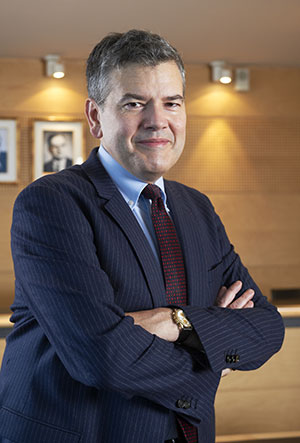CSR: follow in the footsteps of the pioneers


Olivier Peyrat, Chief Executive Officer, AFNOR Group
By Olivier Peyrat, General Manager, AFNOR Group
The commitment made at the highest level of government to obtain a gender equality label and eco-socio-responsible certification as part of the organization of the G7 is a strong signal. Like companies, public-sector players cannot ignore the social and environmental challenges of their activities. Form and content must go hand in hand. To gain in consistency, and therefore in confidence, these players, large and small, can rely on the voluntary standards we publish, and the signs of recognition that are based on published standards.
Once designed to harmonize product specifications and structure the electrical and mechanical industries, voluntary standards now provide benchmarks for a wide range of socio-economic issues, including vocational training, the geographical origin of products, sustainable regional development and the circular economy. The voluntary standard is a curious object, wrongly equated with regulatory constraint, but so useful! A voluntary standard collects and structures best practices, providing a framework for action, reference methodologies and a common language. Let’s salute all those who accept to bring the culture of consensus to life, by sharing their expertise in standards committees. Every year, nearly 19,000 of them work with us to co-write the voluntary standards that will be used by the community in the future. These standards are intended to reflect current practices, while at the same time constituting a first-rate tool for dialogue and economic intelligence, since 90% of voluntary standards are drawn up at European or international level.
Acting by sector
It’s no longer enough to do the right thing and say the right thing. As the past decade has shown, a self-declaration will always be less reliable than the opinion of an independent, credible third party. Organizations have taken this on board, for example by demonstrating their commitment to biodiversity prevention. This will probably be the preferred mechanism for explaining their “raison d’être”. The Pacte law on the growth and transformation of businesses, definitively adopted by MPs on April 11, will encourage them to do so. Many industries have anticipated these challenges, which are now enshrined in the French Civil Code. Companies in the construction and food industries were among the first to do so. While not all companies are exemplary in this area (yet!), some are acting as driving forces, as demonstrated by their participation in the CSR Platform‘s experiment with sector-specific corporate social responsibility labels. Defined by the international ISO 26000 standard nine years ago, the concept of corporate social responsibility (CSR) is becoming more and more tangible, as demonstrated by the widespread use of the previously neglected term “stakeholders”.
The interest generated by the Engagé RSE label also speaks volumes. Obtained by almost 500 organizations, it testifies to the imperative need to promote know-how, under the seal of objectivity and impartiality. By including stakeholders in the assessment perimeter, this label provides organizations with a means of questioning their methods, structuring their projects and reporting on their actions, in line with the famous SDGs, the sustainable development goals defined by the United Nations.
Once again, it’s up to organizations to choose where they place the cursor in their communications, and why not take the lead by pointing out their areas for improvement. The evaluation reports they receive allow for this.
Continuous improvement
The primary aim of the social and CSR labels we issue is to help organizations move forward, by making them understand the reality and sincerity of their commitments. The Diversity and Gender Equality labels displayed by a number of companies and public bodies are interesting tools in this respect. We must continue to publicize them, sorting out the true from the false. No, these labels do not indicate that the certified organization is exemplary in this respect. Yes, they point to the existence of a solid base, as well as a real commitment to progress, by putting in place an optimal organization – according to the 250 criteria of the specifications supported by the State – to improve on these precise issues. To confirm this, regular independent assessments are carried out. They enable the national commissions for each label to decide whether or not the resources mobilized are appropriate for achieving the objectives set by the label holders themselves.
On this subject, as on so many others, there is no single way of “doing it right”. It’s a fact that regulations are guiding organizations towards a more virtuous path. Voluntary standards, like the recognition schemes we manage, are relevant tools for marking out this path. While leaving the field open to innovation.